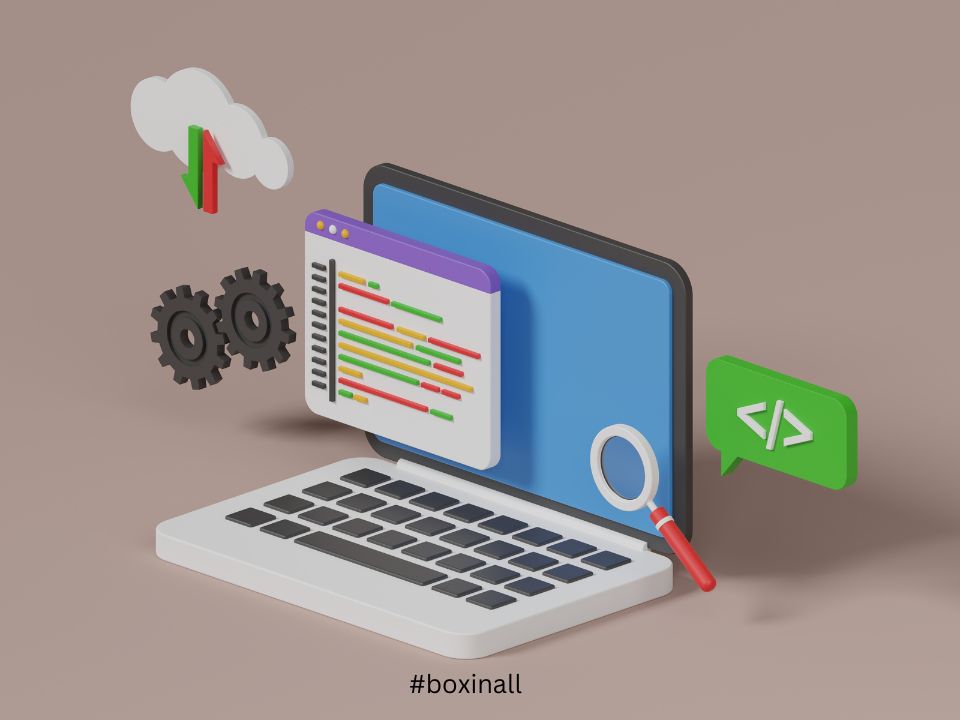Web applications, accessible via a web browser, revolutionize how we interact with digital platforms by offering benefits like multi-user access, cross-platform compatibility, and eliminating the need for installation [1][4]. Moreover, Progressive Web Apps (PWAs) elevate this experience by allowing offline usage and enhancing user engagement, making web apps indispensable in the digital age .
However, the process of creating a web app can appear challenging due to the technical complexities involved in coding, design, and making critical decisions . A comprehensive guide tailored for 2024 aims to simplify this process, ensuring that web app creation is accessible to beginners and seasoned developers alike by breaking down the steps into manageable stages.
Identifying the Purpose and Planning Your Web App
Identifying the purpose and planning your web app involves several critical stages that ensure the foundation of your project is solid and geared towards success. Here are the key steps:
- Define Your Goals and Scope:
- Problem Identification: Understand the problem your web app aims to solve.
- Target Users: Define who will benefit from your web app.
- Features and Functionalities: Determine what your web app will do and its unique offerings .
- Success Metrics: Establish how you will measure the app’s success post-launch.
- Understand Your Audience and Market:
- User Needs and Preferences: Gather insights into what your users expect from your web app.
- Competitor Analysis: Evaluate the strengths, weaknesses, and opportunities presented by competitors to find your edge.
- User Personas and Value Proposition: Create detailed user personas and a compelling value proposition that highlights why your web app is different and better.
- Planning and Documentation:
- Budget and Timeline: Set realistic budgets and timelines for your project’s completion.
- Technology Stack: Choose technologies that match your project’s needs and your team’s skills, ensuring scalability and security.
- Web App Architecture: Decide on the architecture, considering data, logic, and presentation separation for maintainability and future growth .
- Stakeholder Roles and Responsibilities: Clearly define the roles of everyone involved in the project to ensure smooth collaboration.
By meticulously following these steps, you lay a strong foundation for your web app, ensuring it is well-planned, user-centric, and poised for success.
Designing the User Interface and Experience
In the journey of creating a web app, designing the User Interface (UI) and User Experience (UX) is a pivotal stage that directly influences user engagement and satisfaction. Here’s how to approach this phase:
- Wireframing and Prototyping: Start with creating low-fidelity wireframes to outline the basic structure of your web app. This step is crucial for visualizing the layout and making rapid iterations. Gradually, move to high-fidelity prototypes that include more detailed design elements like color and typography, allowing for user testing and feedback collection.
- UI/UX Design Principles:
- Visual Hierarchy: Arrange elements in a way that guides the user’s attention to important information first.
- Intuitive Interactions: Design interactions that feel natural and are easy to understand, reducing the learning curve for new users.
- Consistency: Ensure uniformity across all UI elements to foster a seamless user experience. This includes using a consistent color scheme, typography, and button styles.
- Accessibility: Make your web app accessible to everyone, including people with disabilities, by following best practices for accessibility.
- Innovative Design Elements:
- Minimalist Design: Use simple shapes, a limited color palette, and ample white space to reduce noise and focus on essential content.
- Advanced Technologies: Consider integrating AI, voice and gesture controls, and AR/VR technologies to enhance the interactivity and engagement of your web app.
- Responsive Design: Ensure your web app’s design is responsive, providing an optimal viewing experience across different devices and screen sizes.
By carefully considering these aspects, you can craft a web app that not only looks appealing but also offers a user-friendly and engaging experience.
Frontend and Backend Development
Frontend and Backend Development for Your Web App involves two crucial components: the frontend, which is the interface and experience that users interact with, and the backend, which is the server-side processes and database management that power the app’s functionality. To tackle these components effectively:
Frontend Development:
- Languages and Frameworks: Utilize JavaScript, CSS, and HTML5 to build the structure, style, and interactive elements of your web app. Incorporate frameworks like React, Angular, Vue, and Bootstrap for efficient development .
- Tools: Employ tools such as SASS and LESS for advanced CSS management, enhancing the visual appeal and responsiveness of your web app .
Backend Development:
- Programming Languages: Choose from languages like Ruby, Python, PHP, Java, and .NET based on your app’s requirements. Each language has its strengths and suits different project needs [1][14].
- Frameworks and Technologies: Implement frameworks such as Ruby on Rails, Django, Flask, and Laravel for robust backend development. These frameworks support database management, server-side logic, and application integration .
- Database Connection: Set up a backend by linking your chosen MVC framework with a database. Spend time planning your database schema to ensure efficient data management and retrieval .
By carefully selecting the right languages, frameworks, and tools for both frontend and backend development, you can create a web app that is not only visually appealing but also powerful and scalable.
Testing, Deployment, and Maintenance
Thorough testing and deployment are critical phases in web app development, ensuring both functionality and user satisfaction. Here’s a structured approach to navigate these stages effectively:
Testing:
- Cross-Browser Compatibility: Employ tools like Selenium or BrowserStack for automated testing across various browsers .
- Scenario Testing: Conduct tests for different user scenarios, including form validations and user authentication, to ensure robustness .
- Error Handling: Implement mechanisms for identifying and logging errors, which aids in quick diagnosis and resolution .
- Performance Testing: Utilize performance testing to optimize loading times and request processing, ensuring a seamless user experience .
Deployment and Maintenance:
- CI/CD Implementation: Adopt Continuous Integration/Continuous Deployment (CI/CD) pipelines for efficient and error-free deployment.
- Maintenance Practices:
- Monitoring: Keep an eye on server performance and address issues proactively to maintain optimal functionality .
By adhering to these practices, developers can ensure their web app remains efficient, secure, and aligned with user needs.
Conclusion
Throughout this comprehensive guide, we’ve navigated the multifaceted journey of web app creation, covering ground from initial planning to deployment, and ensuring that each stage is aimed at building a robust, user-friendly, and innovative platform. By diving into the essentials of identifying the app’s purpose, delving into engaging UI/UX design, to the intricate details of frontend and backend development, and embracing thorough testing and deployment strategies, would-be developers and seasoned professionals alike are armed with the knowledge to usher in the next generation of web applications. These insights not only illustrate the technical complexities involved but also underscore the importance of a strategic, user-centered approach in crafting web experiences that resonate with audiences in 2024 and beyond.
As we look towards the future, the significance of staying abreast with the latest technologies, practices, and user expectations cannot be overstated. The evolution of web apps is continuous, and as they become increasingly intertwined with our daily lives, the onus is on developers to push the boundaries of what’s possible. For those ready to embark on the transformative journey of creating impactful web applications, or seeking further guidance and collaboration, remember, the journey is as rewarding as the destination. Get in touch now to explore how we can elevate your web app creation process to new heights.
FAQs
What are the essential steps for developing a web application in 2024?
To develop a web application, you should follow these 12 essential steps:
- Generate an original idea.
- Conduct market research.
- Detail the functionality of your application.
- Organize the app’s workflow.
- Construct a minimum viable product (MVP).
- Develop wireframes and prototypes.
- Obtain early validation.
- Design the architecture of your database.
How much time is typically required to build a web app?
Building a web app can vary in time based on factors such as the app’s size and complexity, the skill level of the development team, and the technologies used. On average, it takes about 18 weeks to develop, test, and launch a web app. However, this timeframe is an estimate and can differ from project to project.
What distinguishes a web application from a website?
The primary distinction between a website and a web application is that a website consists of a collection of webpages that are generally static and accessed through a browser, while a web application is a dynamic software program that runs on a web server and is also accessed via a web browser.
How should I approach planning a new web app?
When planning a new web app, you can follow these steps:
- Find a compelling idea.
- Engage in market research.
- Specify the functionality of your web app.
- Draft a rough sketch of your app.
- Design the workflow of your app.
- Create wireframes or prototypes.
- Validate your concept early on.
- Architect and construct your database.



